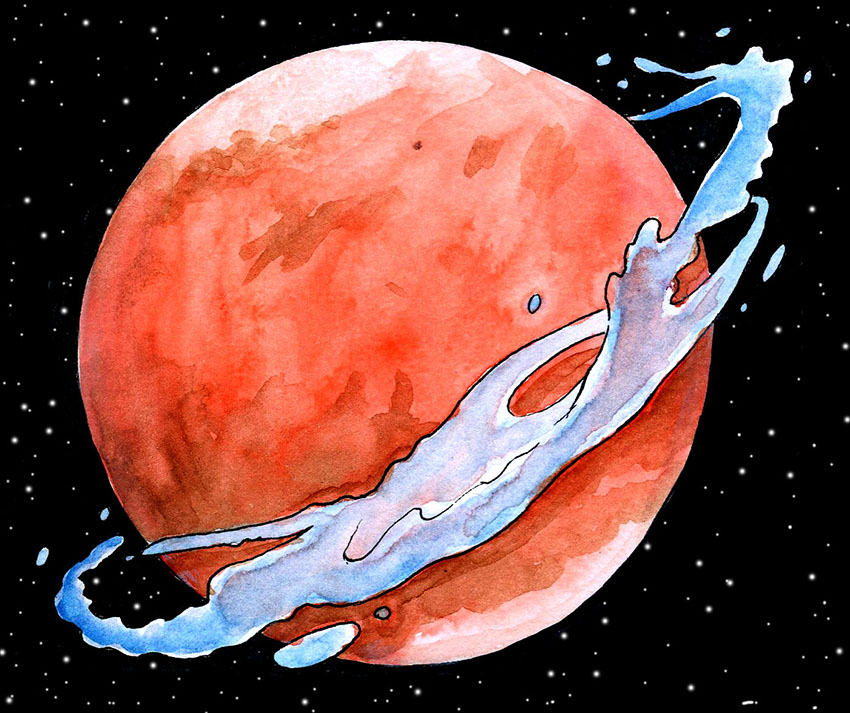A team of researchers from the Jackson School of Geosciences has found evidence of a large, fluctuating body of water in a sedimentary basin on Mars.
Geological studies graduate student Benjamin Cardenas, postdoctoral fellow Timothy Goudge and geological sciences professor David Mohrig collected high-resolution images and topographical data of Aeolis Dorsa, a large sedimentary basin, from instruments aboard NASA’s Mars Reconnaissance Orbiter and Mars Global Surveyor. They studied sedimentary deposits in the Aeolis Dorsa area and concluded that water used to be abundant in the region.
The research examined Mars’ once-incised valleys created by river-like erosion and looked at the now-elevated, winding ridges that lie within them as a result of geological processes. They looked at sedimentation characteristics such as geometry, flow direction and lateral migration, or the migration of a river channel across its floodplain, of these ridges.
Cardenas said he and his colleagues found evidence that the rivers could adjust to a migrating coastline because the downstream water body changed slowly.
“The formation of these river deposits was controlled by a large, fluctuating body of water stable enough in its environment that the rivers flowing into it were able to adjust their depositional styles according to those fluctuations,” he said.
Cardenas added that the research may provide clues about early Martian history.
“There is ongoing debate about the nature of the ancient Martian hydrologic cycle,” Cardenas said. “Some hypothesize it was warm and wet for extended periods, and others hypothesize it was mostly frozen with episodes of catastrophic hydrology related maybe to volcanism or impacts.”
They would not expect evidence of the slow-moving hydrological processes under hypotheses that support more catastrophic scenarios, he said.
Similarly, Goudge recently wrote a paper about evidence of an ancient river delta and a large body of standing water in a region called the Jezero crater. The Jezero crater is now a serious contender for the landing site of the 2020 Mars Rover because of Goudge’s research.
Goudge found that the crater was most likely formed by flooding as it slowly filled up with water. He said evidence of the crater’s formation suggests that the climate during the time of its creation was persistently wet, taking into account minor fluctuations in surface runoff.
The new research has attracted the attention of the Mars 2020 Rover expedition because of the abundant information the region can provide.
“The Jezero crater is an attractive landing site for the Mars 2020 Rover because it contains a diversity of geologic units that capture a range of information about the past Martian surface environment,” Goudge said. “One major unit of interest is a widespread
exposure of carbonate-bearing outcrop, which is uncommon on Mars and could reveal information about the early Martian atmosphere.”
Furthermore, the delta deposit is an area of interest because it is a record of previous conditions of flowing water on Mars and may have concentrations and preserves of organic matter.
“A major part of the mission goals for Mars 2020 is to search for evidence of potential past Martian life, and so a well-exposed delta deposit, such as in Jezero crater, presents an ideal location to do so based on our terrestrial experience,” Goudge said.
According to Goudge, because evidence of water and the potential for finding evidence of Martian life in areas like Aeolis Dorsa and the Jezero crater can open up new doors for Mars research, information gained from the study of these regions still remain hot topics in
scientific discussions.















